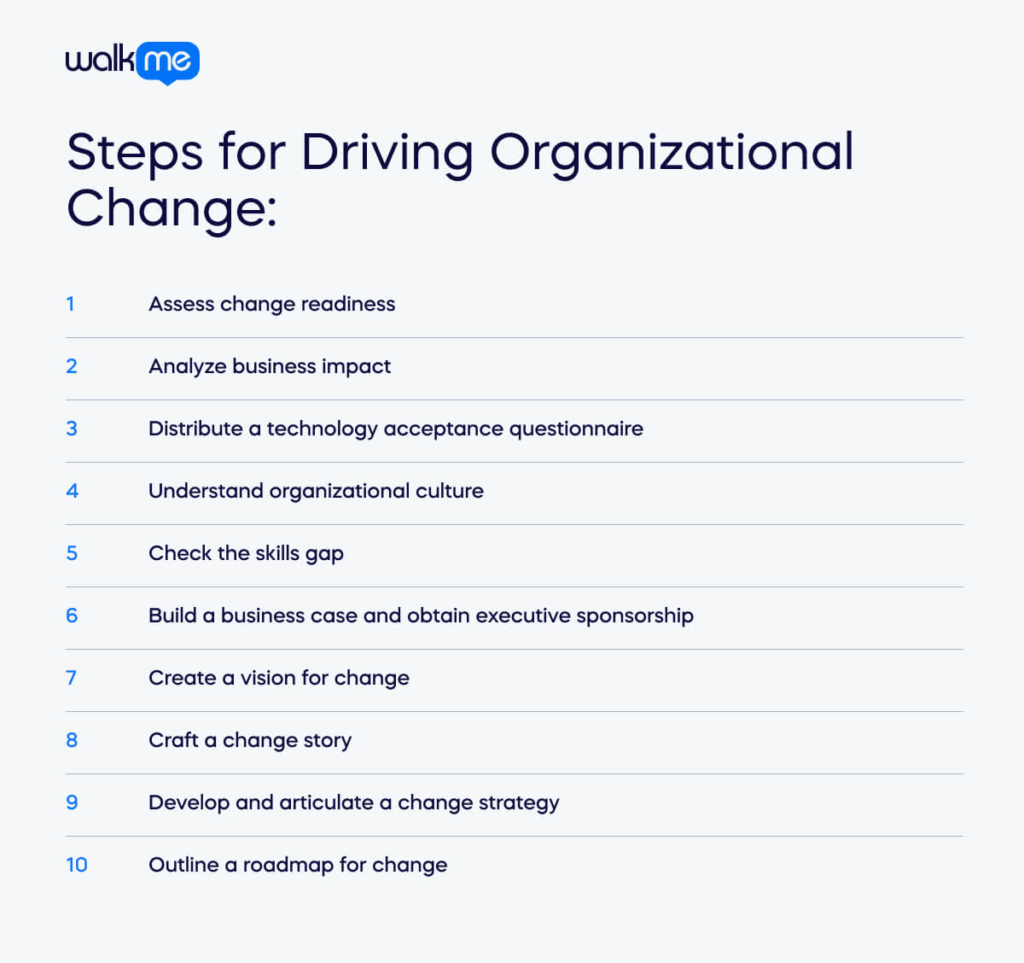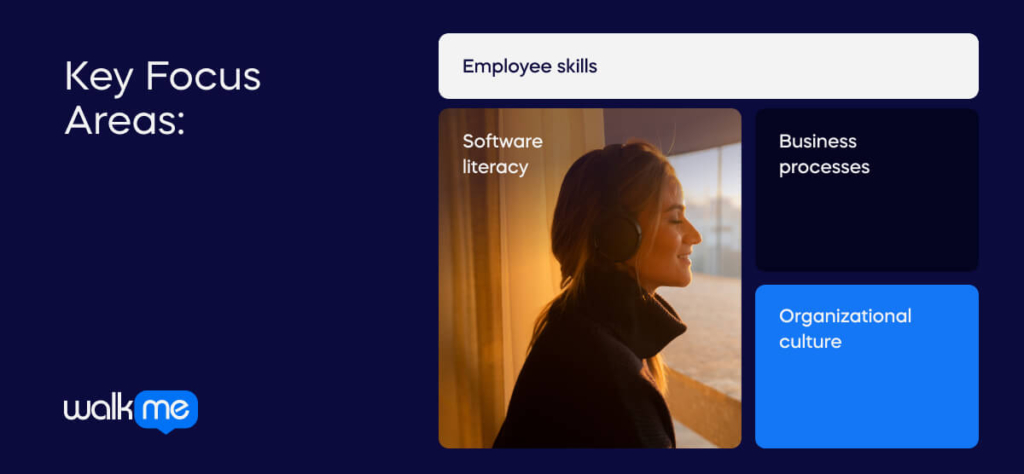A checklist for driving organizational change can streamline change projects, minimize errors, lighten workloads, and improve efficiency.
Below, we’ll cover 21 essential items to include in a change management checklist.
A 21-Point Checklist for Driving Organizational Change
Here are 21 points, roughly in order, to focus on when executing an organizational change project:

1. Assess change readiness
Change readiness assessments offer insight into how ready employees and the organization is for a proposed change.
A few areas to focus on include employee skills, software literacy, existing business processes, and the organization’s culture.

2. Analyze the business impact
A business impact analysis assesses how a change will impact the organization.
This will cover areas such as the financial impact, the impact on the workforce, how customers will be affected, and how business systems will be affected.
3. Distribute a technology acceptance questionnaire
A technology acceptance questionnaire is useful for digital transformation initiatives.
These surveys gauge how willing and ready employees would be to accept and use specific software tools.
4. Understand the organization’s culture
Organizational culture can have a big impact on the efficacy of a change project.
Understanding that culture, therefore, should precede the planning stage.
5. Check the skills gap
Another component of the readiness assessment should be a skills assessment, since skills and training will often play a big role in organizational change projects.
6. Build a business case and obtain executive sponsorship
Executive sponsorship is key for any program to succeed.
Early on during the planning stage, therefore, change managers should build a business case for change and present that to potential sponsors by building management dashboards.
7. Create a vision for change
Change leaders and sponsors should proactively involve themselves with a change project.
One of their key tasks should be to craft a compelling vision of what the change will look like after the project is complete.
8. Craft a change story
A change story, like the vision for change, should motivate and inspire.
It should articulate a narrative that the workforce and the organization will follow until the project is complete.
9. Develop and articulate a change strategy
A change management strategy outlines the general approach to solving the problem in question.
This strategy should be articulated in a concise, easy-to-grasp statement that can be followed throughout the project.
10. Outline a roadmap for change
A roadmap for change, like customer journey maps and project roadmaps, outline a project’s plan of action in stages.
11. Tie project goals to metrics and KPIs
Goals are abstract aims – use metrics and KPIs to turn them into objectives.
12. Develop a change management communication plan
A change management communication plan should also be tied to measurable objectives, such as building an awareness of the need for change, reducing resistance, or recruiting a volunteer army.
13. Design an employee training plan
Employee training is common to many organizational change projects.
An effective training plan should cultivate the skills employees need to drive the organizational change forward and stay successful after the project is complete.
14. Create a resistance management strategy
Employee resistance is a common obstacle for organizational change programs, so it should be planned for and mitigated as early as possible.
15. Assign change teams and create a recruitment strategy
The core change team will act as a guiding coalition that operates at the center of the change project.
It is also important to develop a hierarchy of responsibilities, delegate roles, and create a strategy for recruiting a “volunteer army.”
16. Choose an implementation strategy
Organizational changes are not always rolled out all at once.
In some cases, it is more appropriate to pilot test the project or certain aspects of the project before implementing it on a large scale.
17. Implement and monitor continually
Throughout the project it is important to continually track the change management metrics that were created earlier.
The more frequently managers and change teams meet to review these metrics, the more likely it is they will stay engaged with the project and respond to unforeseen circumstances.
18. Reward short-term wins and maintain momentum
Building and maintaining momentum can be difficult, especially if employees are resistant to change.
One way to build momentum is by rewarding short-term wins and duplicating them across the organization where possible.
19. Stay agile and adjust the program as needed
Battle plans rarely survive the first encounter – and the same is often true in business.
Change managers should be agile and ready to change their plans and adjust to shifting circumstances when necessary.
20. Perform post-project reviews
Once the project is complete, it is important to review metrics, KPIs, employee feedback, and other relevant data.
That information can then be learned from and the lessons applied to future change projects.
21. Reinforce the change over time
Changes should be reinforced over time through mechanisms such as performance reviews, incentives, and other accountability techniques.
Doing so will reduce the possibility that employees will revert to old behaviors completed up to this point.

